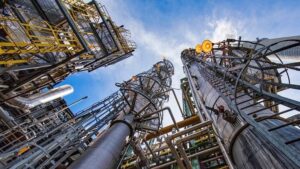The European Copper Institute (ECI) supports the EU’s climate ambitions for 2030 and 2050. Ambitious policies are needed to increase electrification, the deployment of renewables and energy efficiency to decarbonise the European economy and reduce dependency on Russian fossil fuels. Climate action must build on a fast decarbonisation of the electricity grid, combined with energy efficiency in all sectors and electrification whenever possible. While electrification, the deployment of renewables and energy efficiency measures remain the most important levers for decarbonising the EU economy, the deployment of CCUS currently presents the only solution for bringing the emissions of some industrial sectors to net zero.
Copper producers in the EU have already made important efforts to reduce their GHG emissions, notably through shifting to flash smelting furnaces, installing renewable energy generation on site and implementing energy efficiency measures in the mining and processing of copper. This resulted in a reduction of approximately one third in the carbon intensity of refined copper over the period 1990-2018.
The copper producers that the European Copper Institute represents in Europe have committed to a goal of reducing the scope 1 and 2 GHG emissions of their copper production to net zero by 2050.
This commitment is based on a robust and pragmatic analysis of how the GHG emissions of copper production can be abated. The conclusions of this analysis are set out in our decarbonisation roadmap “Copper – the Pathway to Net Zero, Regional focus: Europe” which sets out a trajectory for reducing GHG emissions from copper mining, smelting, refining and recycling in Europe based on an analysis of current decarbonisation technologies, their cost, availability at scale, and abatement potential.
Provided that key enabling conditions, such as access to competitively priced decarbonised electricity, are fulfilled, it is possible to reduce the scope 1 and 2 GHG emissions of copper production in Europe by 30-40 percent by 2030, by 85-95 percent by 2040 and by 90-95 percent by 20504 by using current technologies (electrification, alternative fuels, decarbonized electricity, energy efficiency).
CCUS technologies are amongst the innovations that can allow the copper industry to tackle the last 5-10 percent of CO2 emissions that are the most difficult to abate, in order to reach a full reduction of Scope 1 and 2 emissions by 2050. For copper smelters in regions where copper ore has a higher carbon content than the average, CCS/CCU is the only way to reduce process emissions that result from the thermal processing of copper ores during copper production, as it is not possible to fully eliminate these emissions within the production process.

